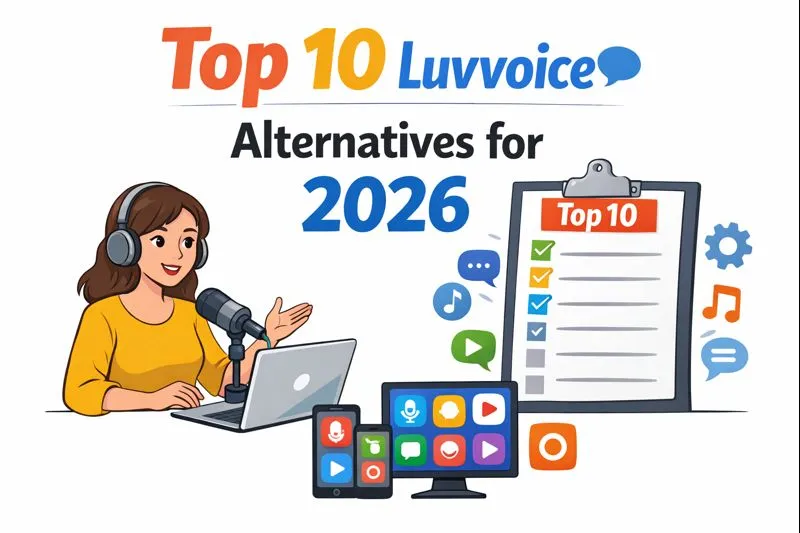Voice Cloning for Video Producers: A Comprehensive Guide
TL;DR
Introduction to Voice Cloning: Revolutionizing Video Production
Imagine creating video voiceovers without hiring actors or needing recording studios. Voice cloning makes this a reality. (Voice Cloning: Fantastic or Reality? - idict)
Voice cloning uses ai to create a digital replica of someone's voice. (Custom AI Voice Cloning - Resemble AI) This technology analyzes recordings to produce new audio. (ai that can analyze audio files and let me ask questions ...) It's changing how video producers create content.
- Cost savings: Reduce expenses by eliminating voice actor fees.
- Scalability: Easily produce voiceovers for large projects.
- Faster turnaround: Get voiceovers done quickly.
- Multilingual options: Use one voice across many languages. Vocloner supports multiple languages natively, meaning it can generate speech in different languages directly from its trained models without needing separate language-specific modules or extensive retraining for each new language.
Next, we'll explore the specific benefits of voice cloning for video producers.
How Voice Cloning Works: The Technology Behind the Magic
Voice cloning might sound like science fiction, but it's rapidly becoming a key tool for video producers. How does this technology turn a simple recording into a versatile digital voice?
Voice cloning uses sophisticated ai and machine learning techniques to analyze and replicate voices. Here's how the magic happens:
- Deep Learning: This is the core of voice cloning. Deep learning models, often neural networks, are trained on large datasets of a target voice. They learn to identify and map complex patterns in speech, such as the unique timbre, pitch variations, speaking rhythm, and even subtle emotional inflections. Think of it like the ai learning the "fingerprint" of a voice.
- Text-to-Speech (TTS) Synthesis: Once the ai model is trained, it can take written text and convert it into spoken audio. The TTS engine uses the learned voice parameters to generate speech that sounds like the original speaker. It's the part that actually "speaks" the words.
- Voice Analysis: Before training, the ai needs to understand the source voice. This involves analyzing audio recordings to extract key characteristics. This "parameter extraction" includes things like the fundamental frequency (pitch), vocal tract shape (timbre), speaking rate, and prosody (the rhythm, stress, and intonation of speech). These extracted parameters are what the deep learning model uses to learn the voice.
These models can then be used to generate new audio. Next, we'll explore the specific techniques used in voice cloning.
Practical Applications of Voice Cloning in Video Production
Want to cut down on voiceover time and costs? Voice cloning offers several practical solutions for video producers. Let's explore how this technology can transform your video production workflow.
Content Creation Efficiency
- Automate routine voiceovers for training videos or product demos. This frees up time for more creative tasks.
- Create consistent character voices across multiple videos. This is useful for animated series or educational content.
- Quickly iterate on voiceover scripts. Make changes without re-recording entire sections.
Global Reach
- Translate voiceovers into multiple languages, as Vocloner supports multiple languages natively, as mentioned earlier. This means you can take a script in one language and generate a voiceover in another using the same cloned voice, maintaining brand consistency.
- Maintain voice consistency across languages. This ensures a consistent brand image.
- Reach global audiences with localized content. This broadens your reach and impact.
Accessibility Enhancements
- Generate audio descriptions for visually impaired viewers. This makes content more inclusive.
- Create voiceovers for silent films or archival footage. This adds new layers of engagement.
- Enhance content inclusivity by providing voiceovers in various styles or for specific accessibility needs, benefiting a wider audience.
Voice cloning is revolutionizing video production. Next, we’ll examine how it enhances video accessibility.
Ethical Considerations and Best Practices
Voice cloning raises important questions. How do we ensure this powerful tech is used ethically?
Here are key best practices:
- Voice ownership: Always respect voice copyrights. Get explicit consent before cloning anyone's voice.
- Transparency: Be upfront with audiences. Let them know when an ai-generated voice is in use.
- Prevent misuse: Guard against deepfakes and misinformation. Use safeguards to ensure responsible voice cloning.
Avoiding Misinformation and Deepfakes
The potential for misuse, particularly in creating convincing deepfakes and spreading misinformation, is a significant concern. To combat this:
- Watermarking and Verification: Implement digital watermarking for ai-generated audio to help identify its origin. Explore verification systems that can authenticate legitimate voice recordings.
- Ethical Guidelines and Regulations: Advocate for and adhere to industry-wide ethical guidelines and emerging regulations surrounding ai-generated content.
- User Education: Educate content creators and consumers about the capabilities and risks of voice cloning technology.
Choosing the Right Voice Cloning Tool
Selecting the right voice cloning tool can feel overwhelming. Each platform offers unique features, impacting the final quality and usability.
Consider these key aspects:
- Realism: Prioritize tools that produce natural-sounding voices.
- Language Support: Ensure the tool supports the languages you need.
- Customization: Look for options to adjust pitch, tone, and speaking style.
- Pricing: Vocloner offers a free tier with a daily character limit, so explore different pricing models to find one that fits your budget.
Future Trends in Voice Cloning for Video
The future of video production is being reshaped by ai voice technology. What trends can video producers expect in the coming years?
Expect improved voice realism. ai will generate voices with more natural intonation and fewer robotic artifacts.
Emotional expression will become more nuanced. ai will better convey subtle feelings, making voiceovers more engaging.
Integration with ai tools will streamline workflows. Voice cloning will work seamlessly with video editing and animation software.
Real-time voice cloning will enable live applications. Imagine interactive videos with personalized voiceovers.
Collaboration between voice actors and AI will increase. For instance, voice actors might provide a diverse range of emotional performances for the ai to learn from, or they could record specific vocal nuances that the ai then replicates. This could also involve actors using ai to generate multiple takes of a line with slight variations for directors to choose from.
Voice cloning will create new opportunities for voice talent. Actors can license their voices for diverse applications, such as creating personalized audiobooks, virtual assistants, or even unique character voices for games that can be generated on demand.
Voice actors will adapt to the changing landscape. They may focus on developing highly distinctive vocal styles or performance techniques that are difficult for current ai to replicate, or they might transition into roles as ai voice directors, guiding the emotional delivery of ai-generated performances.
These advancements promise to revolutionize video production. Producers can look forward to more efficient, creative, and engaging content creation.






